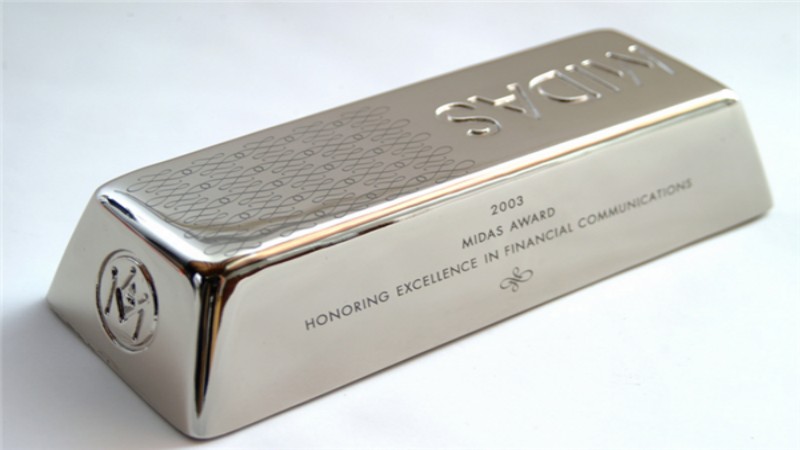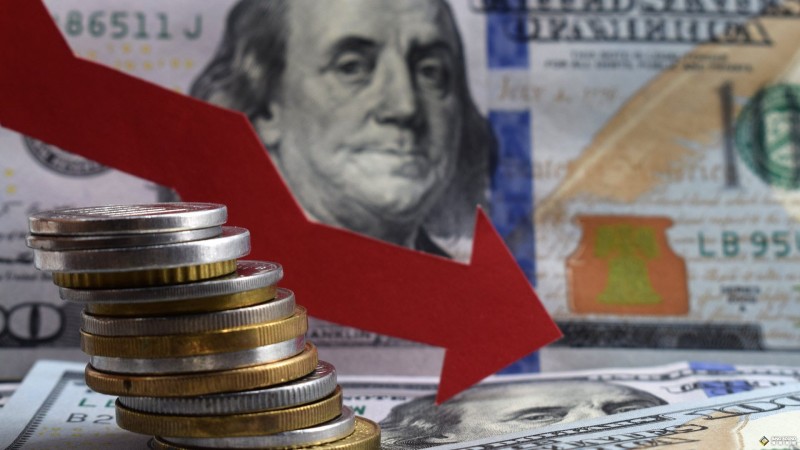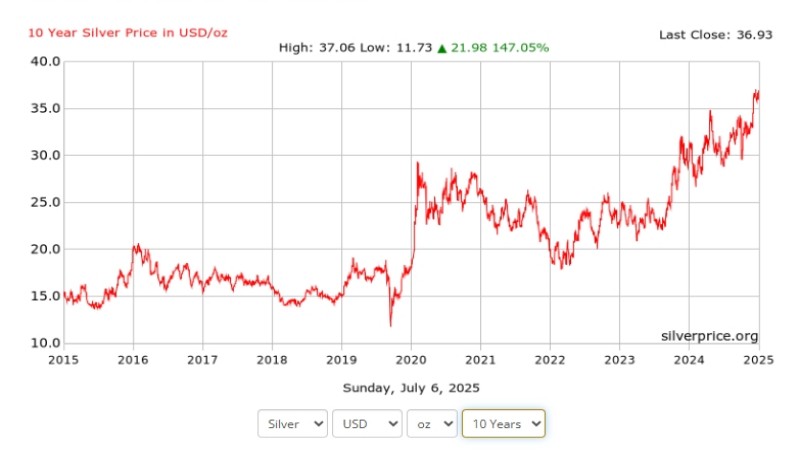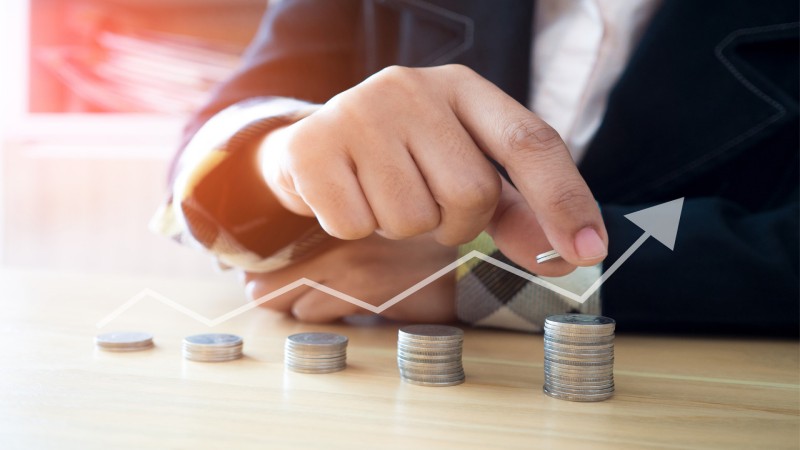What’s Silver Price Trends? How Should Investors Position?
Silver prices have become a focal point in financial markets in recent years, not only for their commodity attributes but also for their growing financial significance.
For Taiwanese investors, tracking silver price trends is an essential part of asset allocation, closely tied to inflation hedging and the flexible use of leveraged capital.
What Is Silver Price? How Does It Affect Taiwanese Investors’ Strategies?
Silver price refers to the real-time quote in the spot or futures market, influenced by factors such as supply-demand shifts, geopolitical events, US dollar exchange rates, and inflation expectations.
Taiwanese investors can participate in silver trading through CFDs, ETFs, or futures, enabling short-term volatility trading or medium- to long-term hedging as part of their asset allocation strategies.
The Dual Nature of the Silver Market: Industrial Metal and Safe-Haven Asset
Silver shares monetary attributes similar to gold while also having extensive industrial applications. Growing demand in new energy industries, such as photovoltaic cells and electric vehicle components, provides strong fundamental support for silver prices. This dual nature makes silver prices highly sensitive to inflation data, the US Dollar Index, and manufacturing indicators such as the Purchasing Managers’ Index (PMI).

Five Key Factors Influencing Silver Prices
Silver prices are not determined by a single market; they are shaped by multiple international and local factors. Below are the core elements driving its price trends:
1. Inflation and Interest Rate Environment
When inflation rises, silver prices often benefit from increased safe-haven demand. However, once the Federal Reserve begins a rate-hike cycle, the stronger appeal of the US dollar may suppress silver prices. For Taiwanese investors using leverage, such policy shifts can amplify risk exposure, requiring careful evaluation.
2. US Dollar and Exchange Rate Volatility
Silver is priced in US dollars. A weaker dollar typically pushes silver prices higher, and vice versa. For TWD holders, it is essential to monitor TWD/USD exchange rate fluctuations to avoid turning potential arbitrage opportunities into currency risks.
3. Industrial Demand and Supply Bottlenecks
Silver’s applications in semiconductors, solar panels, and medical technology continue to expand. According to data from the Silver Institute, global industrial silver demand is expected to grow to 620 million ounces in 2024, reaching a historic high. If mining supply fails to keep pace with this rising demand, silver prices are likely to experience a supply-driven upward cycle.

4. Gold Prices and the Gold/Silver Ratio
Silver prices are highly correlated with gold but tend to be more volatile. When the Gold/Silver ratio exceeds 80, it often indicates silver is undervalued, presenting potential buying opportunities. Taiwanese investors can take advantage of such arbitrage opportunities quickly through silver CFDs.
5. Speculative Capital and Leverage Trading Activity
According to the COT report, non-commercial long positions in silver futures have been increasing since 2024. Short-term capital flows can intensify silver price volatility, creating opportunities for technical traders. Platforms offering highly liquid products, such as Ultima Markets’ silver CFDs, provide greater leverage flexibility and risk management options.
Silver Price Lookup and Analysis: A Practical Guide for Investors
Real-Time Silver Price Chart Lookup Methods
Silver prices can be tracked through various financial platforms, with real-time charts, candlestick (K-line) patterns, and moving average systems serving as essential technical analysis tools. Investors are recommended to use MT4, MT5, or UM’s proprietary platform, combined with indicators such as RSI and MACD, to better determine optimal entry timing.
Silver Price Historical Trends and Cyclical Changes
To help Taiwanese investors understand the historical volatility patterns of silver prices, here is a summary of the past 15 years’ major bull and bear cycles and their driving factors:
| Time Period | Price Range (USD/oz) | Main Drivers | Trend Type |
| 2010-2011 | 17 → 49 | QE policies, gold investment boom | Strong Bullish |
| 2013-2015 | 30 → 14 | Strong US dollar, tightening expectations | Bearish |
| Early 2020 (Pandemic) | 12 → 29 | Pandemic panic, safe-haven demand | Sharp Rally |
| 2021-2022 | 29 → 18 | Rate-hike cycle, rising US Treasury yields | Correction |
| 2023-2024 | 18 → 26 (Range-bound) | Inflation expectations, new energy demand | Bullish Bias (Range-bound) |

Silver Price Forecast 2025: Is a Bullish Trend Still Expected?
The 2025 silver price outlook has drawn significant market attention, with many international institutions maintaining a relatively optimistic view. Below are three key reasons supporting this forecast and the potential price range:
Firstly, demand from new energy technologies remains strong. According to SolarPower Europe, global solar installation capacity is expected to grow by more than 20% annually in 2025, driving continuous expansion in silver paste consumption for the photovoltaic industry. This forms a solid demand base, providing long-term support for silver prices.
Secondly, the macro policy environment is shifting toward easing. The US Federal Reserve may stop raising interest rates and move into a rate-cutting cycle by the end of 2024. According to Bloomberg economist consensus, US real interest rates are expected to fall from the current positive level to 0 or below in 2025. This would weaken the dollar’s appeal and increase the relative attractiveness of silver and other tangible assets.
Thirdly, global geopolitical risks remain unresolved. Ongoing tensions in the Middle East, Russia-Ukraine, and cross-strait regions continue to sustain silver’s safe-haven demand. Notably, silver often rises in tandem when gold prices strengthen.
Comprehensive assessment, the 2025 silver price target range by international institutions is as follows:
| Institution Name | Forecast Range (USD/oz) | Forecast Basis |
| Citibank | 26–30 | New energy driven + monetary easing expectations |
| Goldman Sachs | 25–29 | Industrial demand support + gold-silver ratio correction |
| Deutsche Bank | 23–27 | Inflation slowdown pace and inverse correlation with the dollar |
Overall, although the 2025 silver price does not have explosive conditions, structural support is sufficient, and a bullish trend can still be expected, especially for Taiwanese investors with a mid-term perspective.
Recommended Technical Analysis Tools
Using technical tools such as Fibonacci retracement and Bollinger Bands helps identify pullback support levels and breakout resistance points. Short-term silver traders should also combine volume and moving averages to verify bullish or bearish signals.
Correlation Between Silver Prices and Other Commodities
Silver has a certain correlation with copper and crude oil, especially during economic recovery and manufacturing expansion phases, when silver price volatility tends to increase. This provides opportunities for cross-commodity hedging or arbitrage.
How to Participate in Silver Price Fluctuations? Strategies Suitable for Taiwanese Investors
CFD Trading: Flexible with Leverage Efficiency
CFDs allow investors to participate in silver price fluctuations without actual delivery. By opening a trading account on the Ultima Markets platform, investors can capture daily market swings. Its low spreads and commission-free trading make it suitable for users seeking short-term returns and risk control.
Demo Account Trading: Training and Strategy Verification
Beginners can start by applying for a demo account, using silver prices as the trading target for virtual practice. This helps familiarize them with platform functions and price movements, reducing real trading risks.
Leverage Management and Risk Control Strategies
Although silver prices are highly volatile, strict leverage settings (such as limiting to 5–10 times), stop-loss setups, and proper fund allocation can effectively prevent account blowouts. Ultima Markets offers multiple stop-loss tools and trailing protection features to strengthen trading risk defenses.

FAQ: Common Questions from Taiwanese Investors
Which Is More Suitable for Short-Term Trading, Silver or Gold Prices?
Silver prices have higher volatility, making them suitable for technical traders engaging in swing and intraday trading. Gold, on the other hand, is relatively stable and better suited for medium- to long-term hedging strategies.
Which Platforms Can Taiwanese Investors Use to Trade Silver Prices?
In addition to brokers and futures companies, CFD platforms such as Ultima Markets offer legal and regulated silver contract trading, featuring high liquidity and leverage efficiency.
How Do Silver Prices Interact with the US Dollar Exchange Rate?
The two generally show an inverse relationship. When the dollar appreciates, silver prices may decline; conversely, when the dollar depreciates, silver prices may strengthen. Taiwanese investors should also monitor TWD exchange rate impacts.
Is Short-Term Silver Price Trading High Risk?
High leverage does carry the risk of account blowouts, but losses can be significantly reduced through demo training, technical analysis, and strict stop-loss settings.
Can Silver Prices Be a Long-Term Investment?
If optimistic about structural trends in new energy and inflation, silver prices have medium- to long-term growth potential. It can be considered as part of an asset portfolio to hedge against currency depreciation risks.
Conclusion
Although silver prices are highly volatile, their dual drivers of industrial and financial attributes provide Taiwanese investors with diversified trading and hedging options. By reasonably analyzing trends, utilizing leverage management tools, and testing strategies through demo accounts, investors can improve success rates and effectively respond to price fluctuations. Whether for short-term trading or medium- to long-term allocation, silver prices are worth including in your trading perspective.
Disclaimer: This content is provided for informational purposes only and does not constitute, and should not be construed as, financial, investment, or other professional advice. No statement or opinion contained here in should be considered a recommendation by Ultima Markets or the author regarding any specific investment product, strategy, or transaction. Readers are advised not to rely solely on this material when making investment decisions and should seek independent advice where appropriate.
























